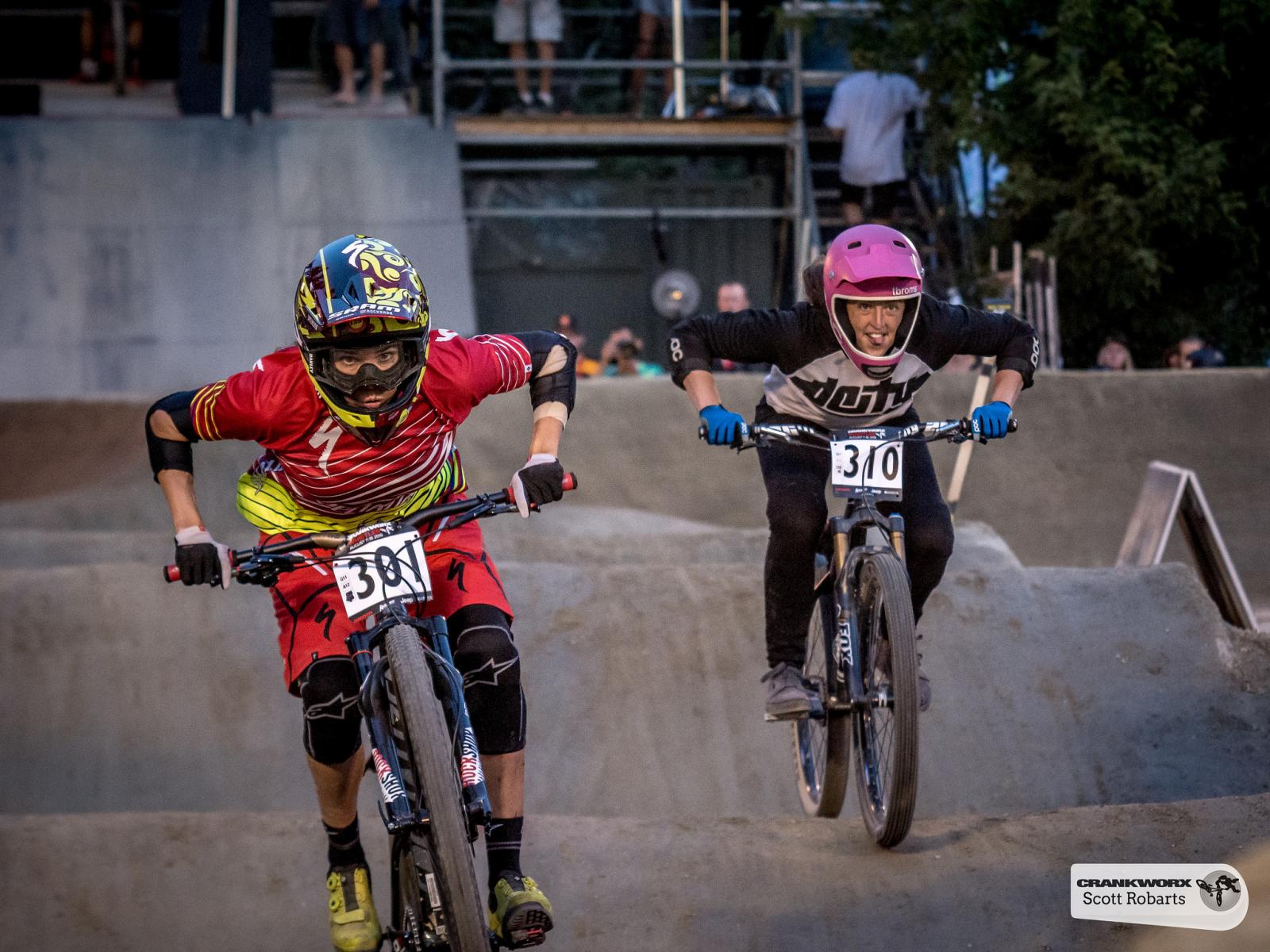August 26, 2015
by Meagan Broughton
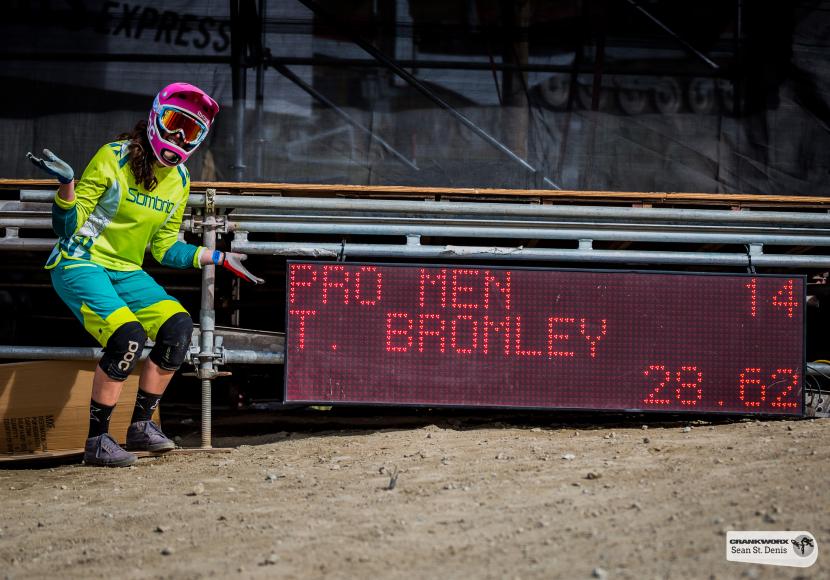
Saturday August 8th, 2015 history was made at Whistler Crankworx, as the first ever female competitor in the Dual Speed and Style event went head to head with the Pro Men.
I caught up with Trish Bromley who shares her experience, words of wisdom and thoughts on the future of women in mountain biking.
SACRED RIDES:
Ok, so wait, you competed in the Pro Men’s 2015 Crankworx Dual Speed and Style event?
TRISH BROMLEY:
I would say, ‘participated’ as opposed to competed. In that, I got through the course and qualified, but got knocked out in the first round of ladders by Andrew Taylor. The goal is to be competitive. Semantics I guess..
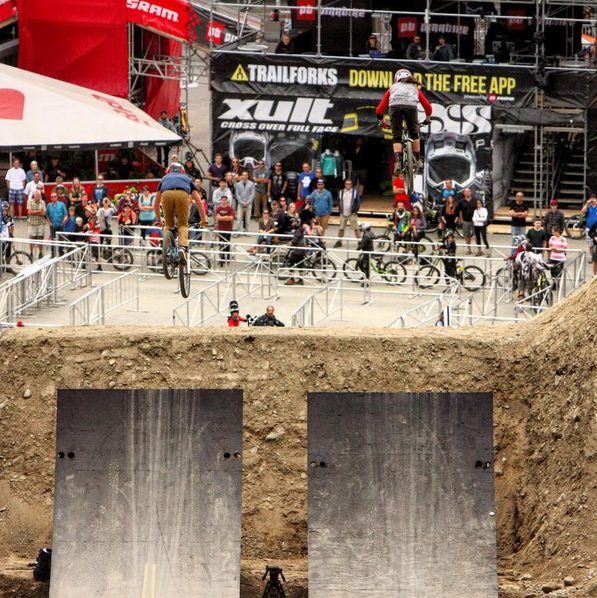
SR: I gotta back up a minute for all of our readers, what discipline of mountain biking is your focus? Can you explain it a little for us newbs?
TB:This year I started riding a short travel jump bike. It’s a similar geometry to a dirtjumper, and the added suspension makes it more forgiving on the bigger jumps. The goal is to get into slope style, so I guess it’s time to learn some cool tricks. I coach DH in the Whistler Bike Park, and spend a lot of time on my Transition PBJ. It’s a smaller bike with suspension only in the front, and the geometry is super playful. It’s perfect for dirt jumps, pumptrack and cruising around Joyride150. Ultimately, I’m focusing less on racing and more on freeride.
“ULTIMATELY, I’M FOCUSING LESS ON RACING AND MORE ON FREERIDE. ”
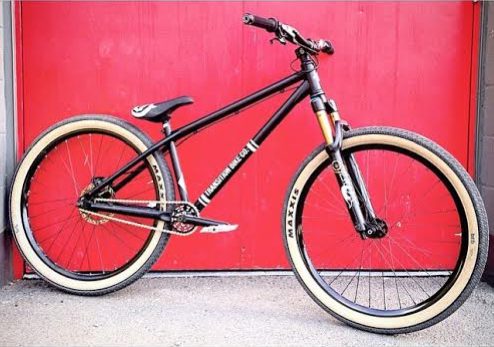
SR: What events do you compete in?
TB: This Crankworx I competed in the Speed & Style, Pumptrack, and Dual Slalom. I dabbled in DH racing in the past, and I’m currently loving the turnout and energy at the head to head, spectator focused events. It puts a pretty big smile on my face.
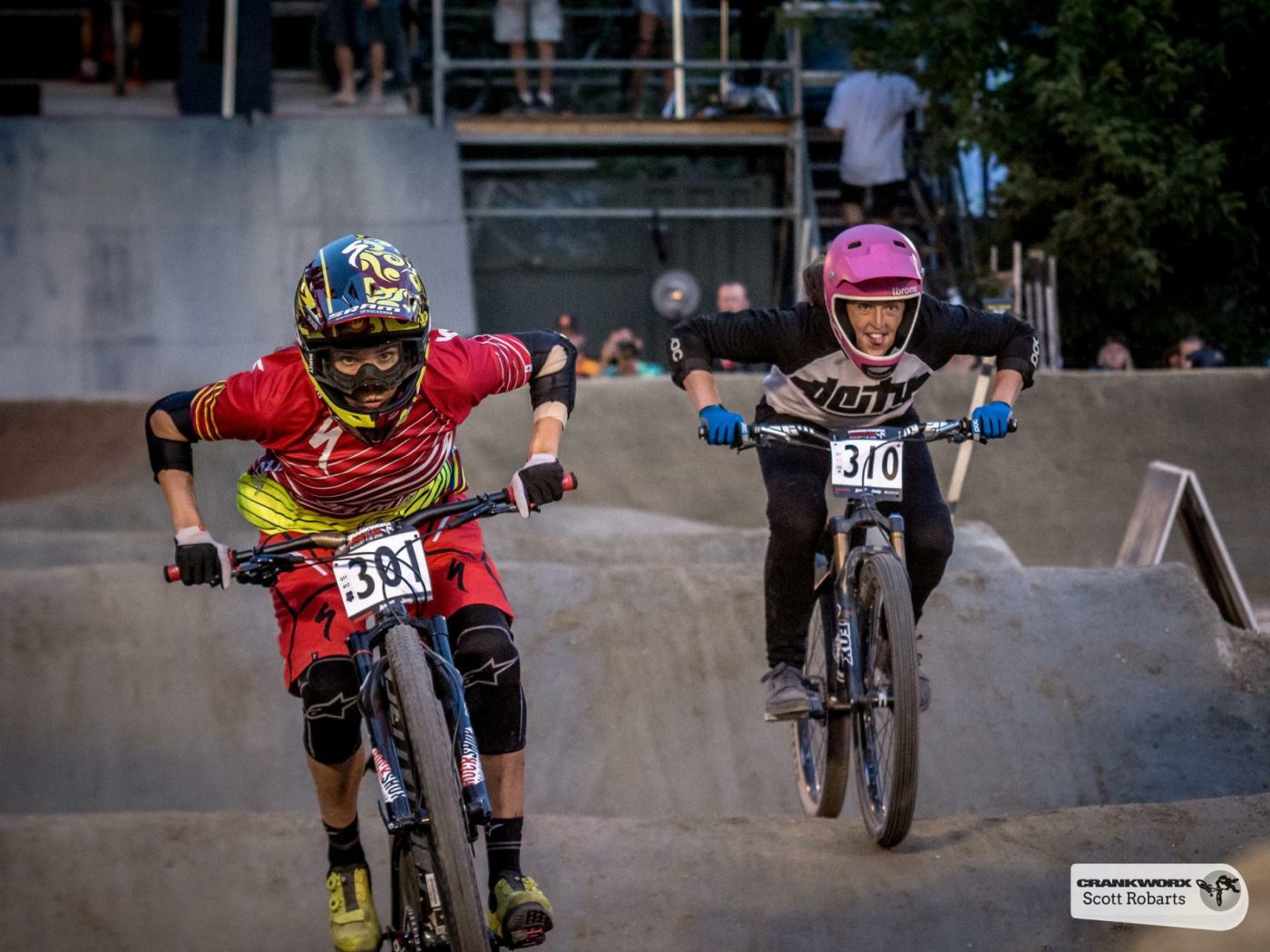
SR: Why do you think there are so few Freeride events for women?
TB: The whole chicken vs egg debate applies here: why create events if registration numbers aren’t there? Yet, how can you invite registrations if no one has heard of the events? Events specifically for women do attract a certain audience, but conversely, I wonder if it leaves women seeking out women’s specific camps and contests, and missing out on a calendar packed full of great events. I’m trying not to put my foot in my mouth on this topic- I highly recommend checking out women’s specific events, it’s a unique and addicting experience, but don’t let that limit your options. And if you’re still not finding what you’re looking for, create it.
“IF YOU’RE STILL NOT FINDING WHAT YOU’RE LOOKING FOR, CREATE IT.”
SR: If there were more events for women, who would be your main competition?
TB: Myself. I’m constantly battling with my own perception of what is possible. A friend of mine shared one of his favourite quotes while pulling me out of the foam pit at Joyride150. He said, ‘whether you think you can, or you can’t- you’re right.’ A shared investment in progression at women’s events is very present. Yes, there can only be one person on the top of the podium, but when we’re supporting each other to do more, I think everyone wins.
“WHETHER YOU THINK YOU CAN, OR YOU CAN’T- YOU’RE RIGHT.”
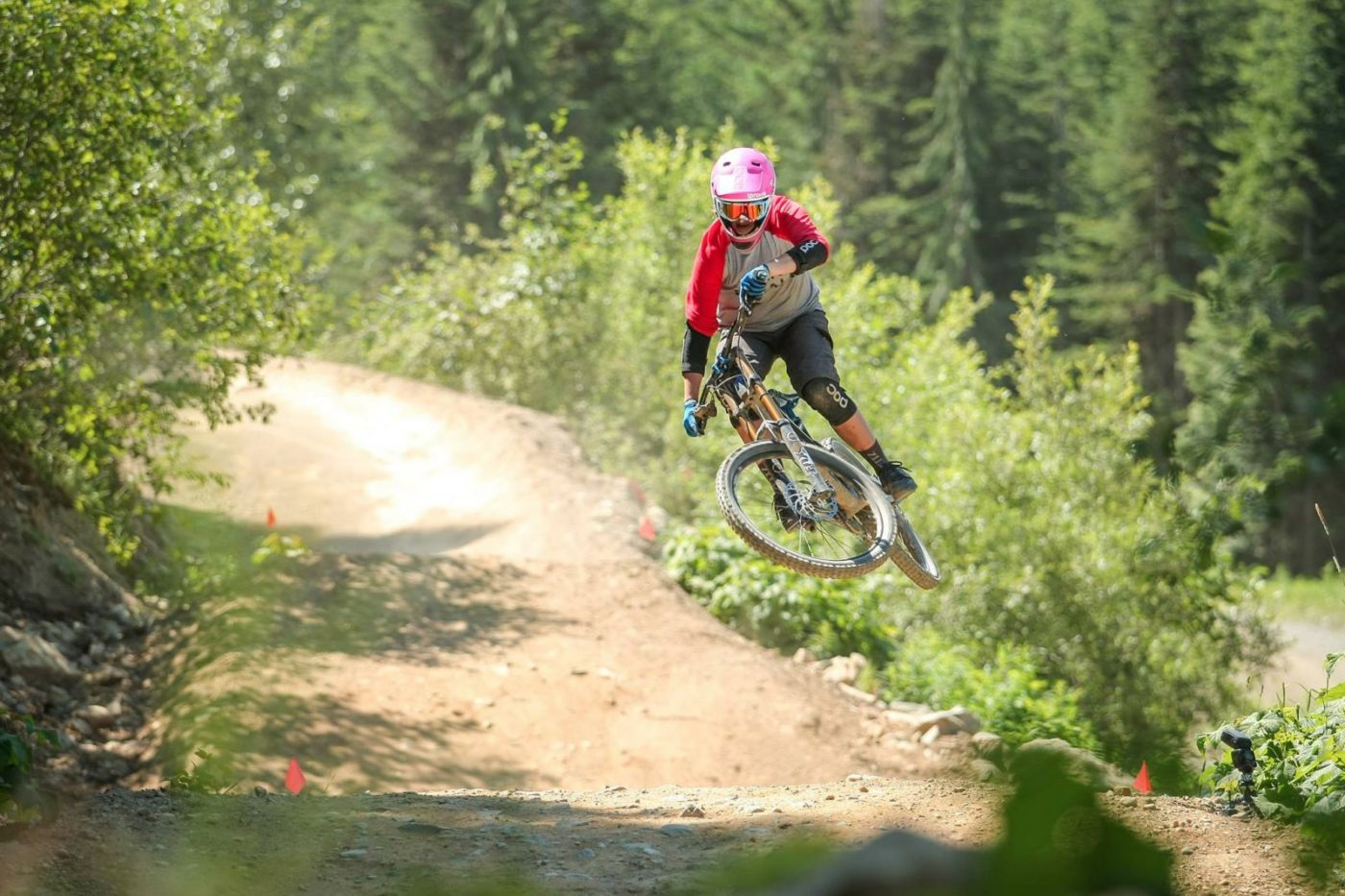
SR: What inspired you to focus on freeriding, as oppose to any other style of riding?
TB: Here’s a pretty fun game anyone can play with friends: It’s really easy with a small group, and gets pretty entertaining as the numbers grow. One person leads, and each person behind them has to create a different line. Think about having paint on your tires and you each have to paint a unique line. Laughs are inevitable and it really helps your riding too. I tried racing (and still love it) but I can take more chances in my own riding when not bound by a ticking clock. Your own interpretation of the trail comes out, and it’s fun to find exciting lines on familiar trails. It’s an excuse to play, not that you should need one.
SR: For women working on jumping for the first season, what are a few tips you can pass on for progression? Let’s say from credit card air to bike length.
TB: This is such a frequent area of discussion. Find yourself a pumptrack!
There are tons being built in community parks these days, and they’re a staple at indoor parks as well. Even if you’re already clearing trails like Crabapple, you can learn so much about pressure control and flow.
- Start slow, almost passively rolling around- the idea is to first build your range of motion and feel out the rollers.
- Feel the bike come up underneath you as your elbows and knees bend going over the roller, and let your arms and legs extend as you go down the other side.
- Be dynamic and fluid in these movements. Any stiffness and imbalances become very clear in a pumptrack and it’s a lot safer to discover that on a pumptrack than in the air!
- Once you’re comfortable casually rolling, add in some power. This is generated by pumping, not pedaling into the start of the track.
- Press through your legs on the up ramp of the roller, keeping your feet parallel to the ground- it sounds weird but it becomes natural. Then soften your elbow and knees and let the bike come up underneath you.
- Let it feel as if it’s weightless, that means you nailed the press beforehand.
- Then drive your arms, then legs, down the backside of the roller to generate momentum.
Once we’re freely flowing around the track, I’ll show riders the side profile of a roller and compare it to a jump. A jump is essentially a roller with the top cut off. A common misconception is to lift the bike into the air with you off the lip- this happens a lot when riders are clipped in.
“ANY STIFFNESS AND IMBALANCES BECOME VERY CLEAR IN A PUMPTRACK. IT’S A LOT SAFER TO DISCOVER THAT ON A PUMPTRACK THAN IN THE AIR!”
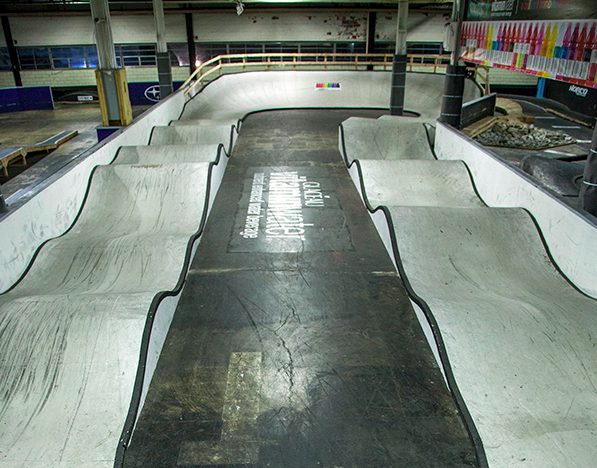
“A COMMON MISCONCEPTION IS TO LIFT THE BIKE INTO THE AIR WITH YOU OFF THE LIP- THIS HAPPENS A LOT WHEN RIDERS ARE CLIPPED IN.”
But rolling around the pumptrack as a warm up generally corrects this and the airtime becomes easy. In terms of going bigger, play with your press. I like to session the same jump so there is consistency in the lip. Try holding it for a little longer before letting the bike come up underneath you. But do this at a slower pace before adding speed. I hope that helps.
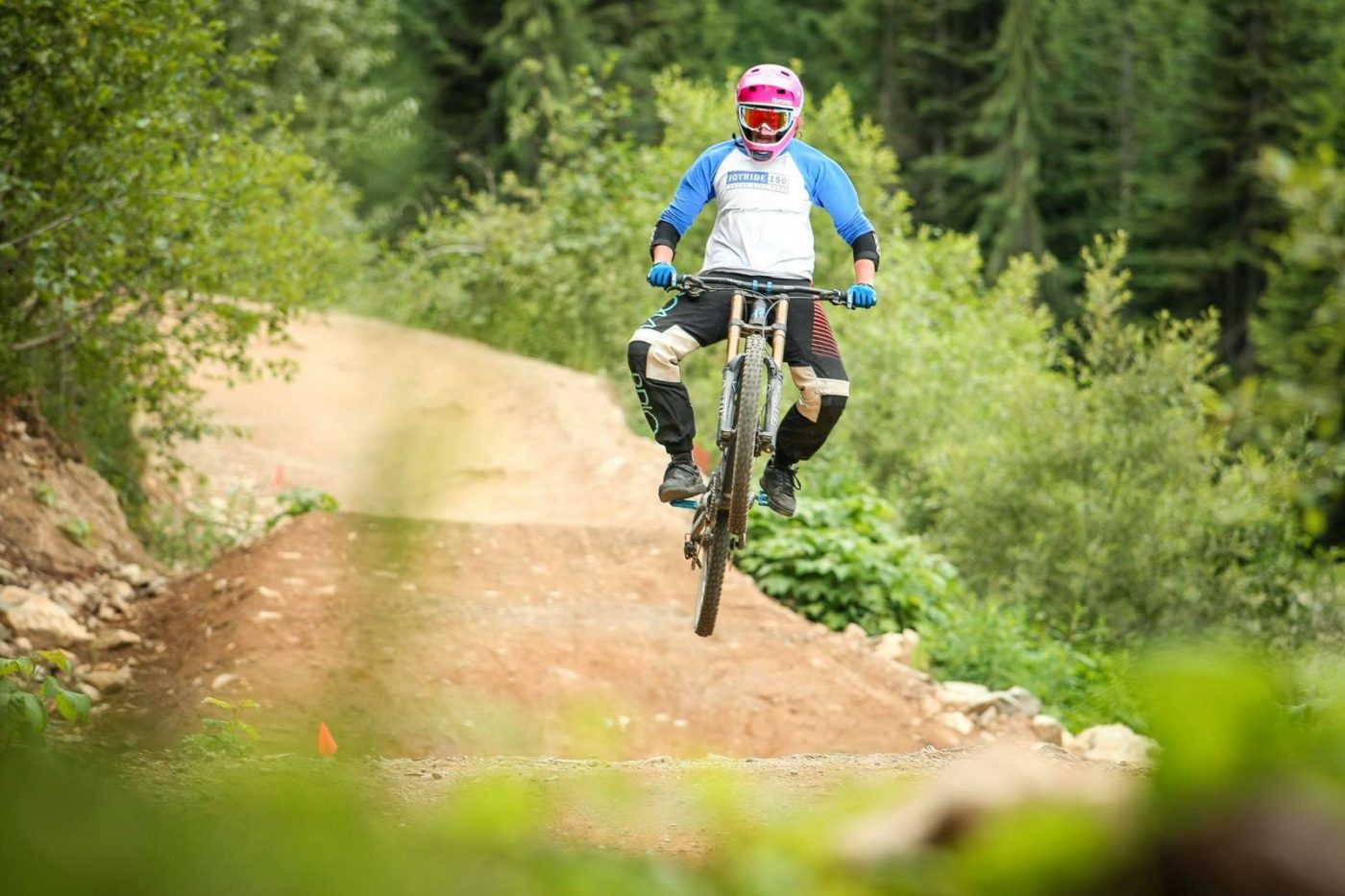
SR: For women who have airs dialed and are starting to think about style, what’s the first trick you’d suggest trying out? Any tips to conquer it?
TR: I started playing with my hands. A simple one hander was easy when I figured out how to get that weightless feeling in the air. Start little, releasing the tension in your fingers first, and build from there. Also, find yourself a foam pit. It makes the learning process for more involved tricks a lot easier.
SR: How can the riding community help you and other women with your skill set make a career out of this talent?
TB: Interesting question. Allow yourself to play. And in the nicest way possible, as I’m frequently guilty of this, stop making excuses. Watch this video.
Because, I see that fire in so many eyes, the desire to overcome a challenge and to do something new. Coaches need students, and competitions need competitors (and even cheering fans). So whether it be participating in a camp, or competing in an event, get after it.
“COACHES NEED STUDENTS, AND COMPETITIONS NEED COMPETITORS (AND EVEN CHEERING FANS). SO WHETHER IT BE PARTICIPATING IN A CAMP, OR COMPETING IN AN EVENT, GET AFTER IT.”
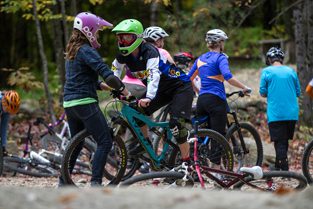
SR: What’s next for Trish Bromley?
TB: There’s a lot up in the air right now, but what I can confirm is I’ll finish the summer in Whistler and head back to Joyride150 to teach for the winter. I’m also hoping to make a trip to Highland Bike Park for their Women’s Freeride Fest in October. I hesitate to reveal too much as a few ideas are in their early infancy, but I’ll keep you posted for sure!

